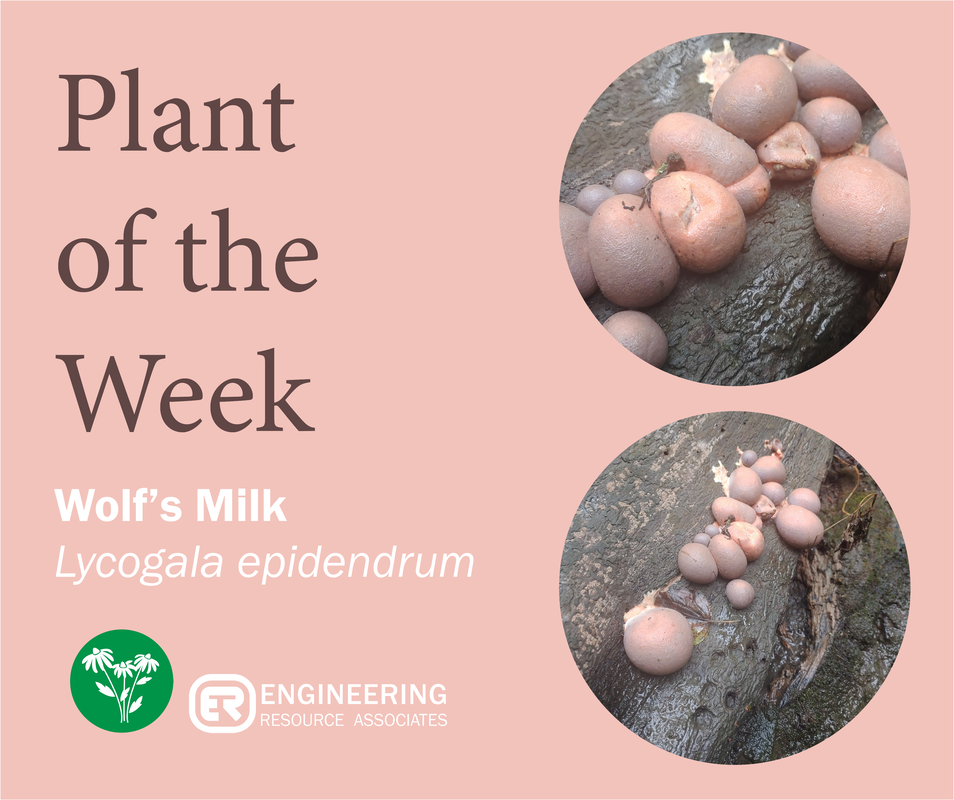This organism as we see it, is the fruiting body of a myxogastrid amoeba, a variety of slime mold! With the Latin roots Myxomycota translating to “slimy fungus”, it is easy to see how this species got its name, even if it is a bit misleading. Before the fruiting bodies appear, the organisms are too small to be seen with the naked eye, though some others of this group are large enough to be observed as small amorphous gelatinous bodies. The fruiting bodies of L. epidendrum often first present as pink globe structures on moist wood and particularly large logs (the photographed specimen was observed on a log in St Joseph Creek). The immature spores are soft and filled with a pink goo that has a texture similar to yogurt. As the fruiting body matures and dries out, it turns from pink to brown or grey and the goo dries into a powder where it can be dispersed by rain drops hitting the structure, causing the spores to burst out with enough force to spread out to new potential hosts.
Slime molds are a fascinating class of organism that resemble a fungus but behave like an animal. Experiments by scientists have seen slime molds solve mazes in search of food, and have even been used to create living maps of the Tokyo subway system, as discussed in this National Geographic article.
Come back next week for the spooky final plant of the week post as the growing season comes to a close.


 RSS Feed
RSS Feed